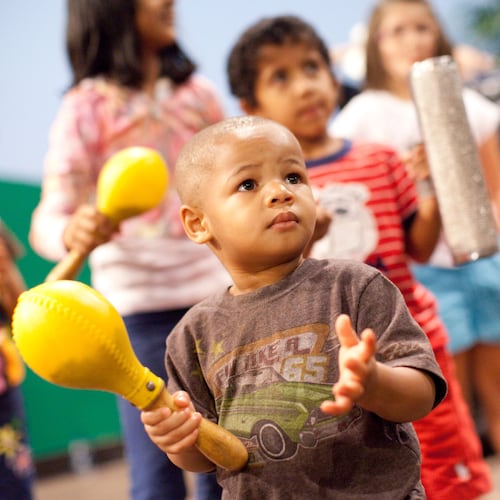BALTIMORE — For 126 years, the annual yearbook of the Johns Hopkins University — called, at different times, the Debutante, the Hopkinsian and, most enduringly, the Hullabaloo — has documented a range of life on campus and beyond: the great tug-of-war team of 1892 and protests against the Vietnam War, the Class Yell and the deaths of the school’s graduates in World War II.
This year, for the first time in decades, graduating seniors won’t have a yearbook to buy. Hopkins and colleges around the state and country are phasing out yearbooks in an age when students who already document their experiences themselves — and can access their memories — on social media are less interested in shelling out $100 or more for the hard copy.
Towson University published its last yearbook in 2009. Morgan State University is scaling back to print-on-demand. The University of Maryland, Baltimore County printed its last in 1986.
Nationwide, the University of Virginia, Wesleyan and Purdue are among the many that have discontinued yearbooks in recent years. Virginia revived its book, Corks & Curls, last year.
Kelley Callaway, president of the College Media Association and yearbook adviser at Rice University in Texas, said yearbooks appear to be shrinking nationally, as the number of yearbook advisers with whom she stays in touch has shurnk in recent years. The association plans to start tracking the phenomenon.
They’re not all going away, Callaway said, but “they’re definitely morphing and changing.”
When universities stop publishing their yearbooks, they lose not only a once-cherished campus tradition, but also future historical records.
“I don’t know how people will replace this resource,” said James Stimpert, a senior reference archivist for Johns Hopkins’ Sheridan Libraries. “Even though ‘the Hullabaloo’ was a shell of its former self in recent years, it still was something. It had some photographs, it had some documentation of student clubs and other activities. So going forward, I don’t know how that is going to be documented.”
Change has long been coming, Callaway said.
While yearbook staffs in the past featured portraits of all the students, she said, some of today’s colleges have so many students that they’re scaling down the portraits to focus more on pictures of campus life or sports.
Some are shrinking the number of pages to cut down on costs. While some seniors might not be thinking about the yearbook as they prepare for graduation, Callaway said, they might come to regret not having one decades down the line.
“There’s a lot of prestige to having an old yearbook and having something that is cherished in a way that newspapers and magazines won’t be,” she said. “You’re just losing that end-of-the-road piece, especially for seniors.”
At Johns Hopkins, the earliest editions of the yearbook were filled with flowery prose and poems written by the editors.
Smaller classes made it possible for the editors to write a detailed biography of each student — most of which were intended to be humorous. One laid-back Johns Hopkins student in 1928 was described as having “a most happy college career without having become embroiled to any great extent in extracurricular activities or intensive study.”
Hullabaloo adviser Joan Freedman struggled last year to find students interested in putting together the yearbook. The last edition sold 228 copies at $75 apiece.
“I can’t put my finger on when it became a problem,” Freedman said. “We just tried to sustain it as long as we could. Students will make time for things that they’re passionate about, and this just wasn’t one of them.”
Coppin State University has a different formula for its yearbook. Unlike yearbooks assembled by students, the Eagle has an adviser who compiles the bulk of the book himself. It’s given free to all graduating seniors.
“There’s something about having a yearbook that you can’t replace with social media,” adviser Jason Goode said.
Ryan Almon, the co-owner of Balfour Yearbooks’ Houston office, said three universities in the Houston area have dropped their books in recent years.
The industry is trying to provide the schools with resources and training for producing yearbooks, he said. It’s also trying to pitch reluctant students and advisers on the value of them.
“It’s definitely been a challenge and a battle to make sure that the yearbook is still relevant on campuses,” Almon said. “I think that’s what campuses are struggling with, is trying to convince students in the social media age that the instant information that they’re able to access now on their phones will not live and reside forever.
“It remains to be seen whether we can win the battle. Obviously, on some campuses, we’ve lost.”
At Towson University, archivists have been developing ways of documenting campus life since the Tower Echoes ceased publication in 2009.
They’re asking student groups to submit fliers, meeting minutes and more to be kept in the library’s collections, and trying to obtain software that can automatically archive students’ social media postings.
“Nowadays, they’re leaving their legacy and their mark in other ways,” said Ashley Todd-Diaz, head of Towson’s special collections and university archives. “They’re in social media, they’re creating more events on campus.
“It’s been kind of a challenge for the archivists to meet them where they are and figure out how we can still document their experience without something like a yearbook.”
About the Author
Keep Reading
The Latest
Featured

